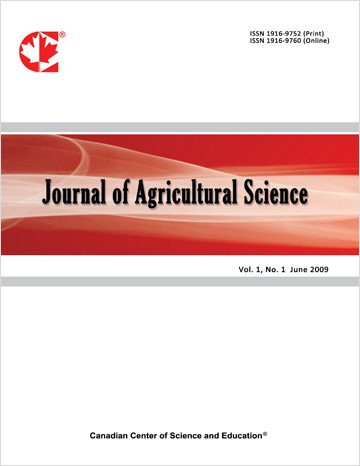Phylogenetic Analysis of the S Gene of Porcine Epidemic Diarrhea Virus (PEDV) in Zhejiang Province, China (2019-2024)
- Minzhen Chen
- Bin Yu
- Lihua Xu
- Junxing Li
- Shiyi Ye
- Fei Su
- Fuwen Yang
- Hongchao Sun
- Xiaopin Yu
- Xiufang Yuan
Abstract
To understand the genetic variation trend of the S gene of porcine epidemic diarrhea virus (PEDV) epidemic strains in various regions of Zhejiang Province, this study collected pig diarrhea samples from different pig farms in Zhejiang Province from 2019 to 2024. The positive samples were identified by fluorescence quantitative RT-PCR, and the S gene was cloned, sequenced, and sequenced for comparative analysis. The results showed that among the 49 epidemic strains obtained, 6 were from the GI group and 43 were from the GII group, including 26 from the GIIb subgroup, 12 from the GIIc subgroup, and 5 from the GIIa subgroup. The nucleotide sequence similarity and amino acid similarity between the S gene sequences of 49 strains of PEDV are 93.2-100% and 84.2-99.9%, respectively. The nucleotide sequence similarity and amino acid similarity with the reference strain are 90.8-100% and 82.4-99.9%, respectively. Compared with the representative vaccine strain CV777 of GIa subgroup and the representative strain AJ1102 of GIIb subgroup, the S gene of 49 strains all have amino acid insertions and deletions. Analysis of N-glycosylation sites showed that 18 strains had 28 N-glycosylation sites, 9 strains had 27 N-glycosylation sites, 13 strains had 29 N-glycosylation sites like the CV777 vaccine strain, 5 prevalent strains had 22 N-glycosylation sites, and 4 strains had 26 N-glycosylation sites. The above results indicate that most of the current PEDV epidemic strains belong to the GII group, which has significant differences in genotype compared to classical strains. This study provides a reference for the prevention and control of porcine epidemic diarrhea in Zhejiang Province and the development of vaccines. Similarity were 90.8-100% and 82.4-99.9%, respectively. N-glycosylation site analysis showed that 18 strains had 28 N-glycosylation sites, 9 strains had 27 N-glycosylation sites, 13 strains had 29 N-glycosylation sites like CV777 vaccine strain, 5 epidemic strains had 22 N-glycosylation sites, and 4 strains had 26 N-glycosylation sites. The above results showed that most of the current circulating strains of PEDV were GII group, which were quite different from the GI group of classic strains, which provided a reference for the epidemic prevention and control of porcine epidemic diarrhea and the development of vaccines in Zhejiang Province.
- Full Text:
 PDF
PDF
- DOI:10.5539/jas.v17n6p18
Journal Metrics
- h-index: 67
- i10-index: 839
- WJCI (2023): 0.884
- WJCI Impact Factor (2023): 0.196
Index
- AGRICOLA
- AGRIS
- BASE (Bielefeld Academic Search Engine)
- Berkeley Library
- CAB Abstracts
- ChronosHub
- CiteSeerx
- CNKI Scholar
- Copyright Clearance Center
- CrossRef
- DESY Publication Database
- DTU Library
- e-Library
- EBSCOhost
- EconPapers
- Elektronische Zeitschriftenbibliothek (EZB)
- EuroPub Database
- Excellence in Research for Australia (ERA)
- Google Scholar
- Harvard Library
- IDEAS
- iDiscover
- Jisc Library Hub Discover
- JournalTOCs
- KindCongress
- LIVIVO (ZB MED)
- LOCKSS
- Max Planck Institutes
- Mendeley
- MIAR
- Mir@bel
- NLM Catalog PubMed
- Norwegian Centre for Research Data (NSD)
- Open J-Gate
- OUCI
- PKP Open Archives Harvester
- Polska Bibliografia Naukowa
- Qualis/CAPES
- RefSeek
- RePEc
- ROAD
- ScienceOpen
- Scilit
- SCiNiTO
- Semantic Scholar
- SHERPA/RoMEO
- Southwest-German Union Catalogue
- Standard Periodical Directory
- Stanford Libraries
- SUDOC
- Swisscovery
- Technische Informationsbibliothek (TIB)
- Trove
- UCR Library
- Ulrich's
- UniCat
- Universe Digital Library
- WorldCat
- WRLC Catalog
- Zeitschriften Daten Bank (ZDB)
Contact
- Anne BrownEditorial Assistant
- jas@ccsenet.org
